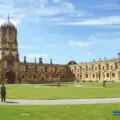Last Updated on August 13, 2021 by
Man’s desire to able to take photographs goes back hundreds of years. From the eleventh to the sixteenth century, there was a device called “the camera obscura”, which was a forerunner of the photographic camera. Its. the purpose was to show on paper an image that could be traced by hand to give accurate drawings of natural scenes.

In 1802, two men, Wedgwood and Humphry, took an important step forward. They recorded by contact printing, on paper coated with silver nitrate or silver chloride, silhouettes, and images of paintings made upon the glass. But they could not make these prints permanent.
In 1816, Joseph Niepce made a photographic camera, with which he could get a negative image. And in 1835, William Talbot was able to obtain permanent images. Talbot was the first to make positives from negatives, the first to make enlargements by photography, and the first to publish (in 1844) a book illuRtrated with photographs.
From then on, a whole series of improvements and developments came one after the other. Tbe popular Kodak box camera was placed on the market in 1888, and photography as we know it was on its way.
Most photographic processes depend on the fact that the chemical silver nitrate reacts to light by turning black. And this was discovered way back in the seventeenth century by alchemists who were trying to find a way to turn common metals to gold.
Who Made The First Camera?
Johann Zahn made the first camera.
Who made the first photographic image?
Answer- Joseph Nicéphore Niépce
What was the first permanent photo?
Answer- Niépce Heliograph.
When was the first photo taken?
Answer- Joseph Nicéphore Niépce a French scientist took that photograph in 1826, titled View from the Window at Le Gras.






